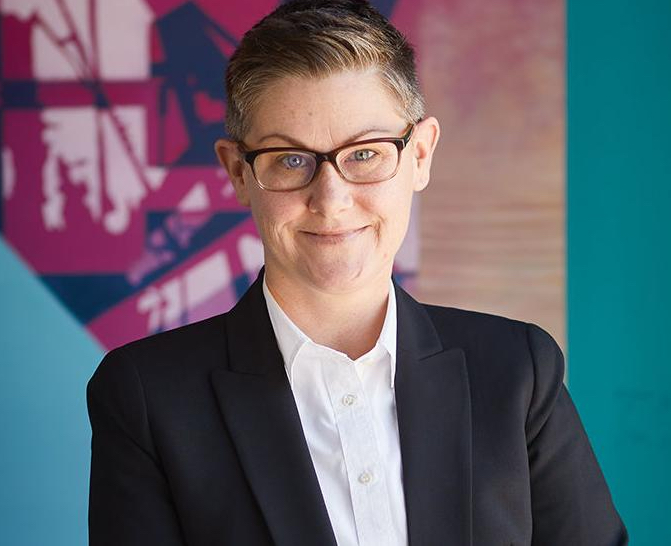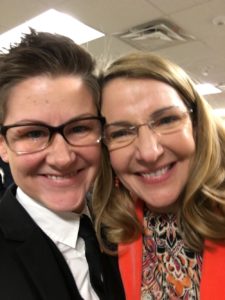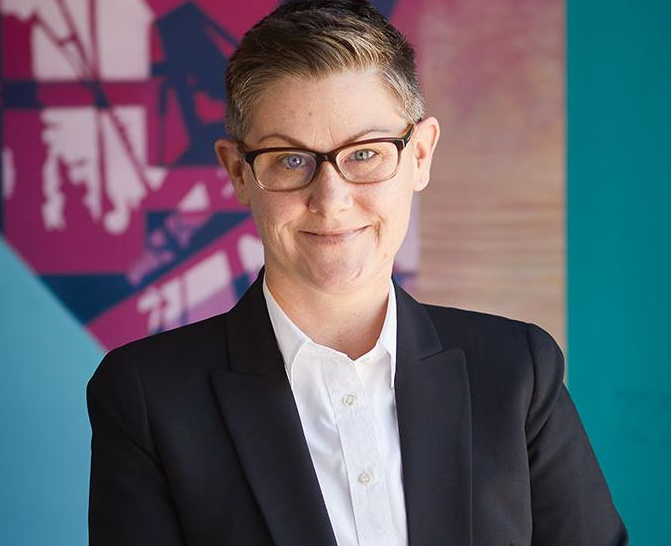Virginia has been one of the most reluctant states to consider marijuana law reform, though it recently began allowing some forms of cannabis oil for approved patients. MERRY JANE spoke with NORML’s Development Director, Jenn Michelle Pedini, to find out how they got the state’s conservative lawmakers to finally bring medical cannabis to its residents.
The American South has been one of the toughest (weed) cookies to crack when it comes to marijuana reform, despite legalization’s wildfire spread over the past half-decade. Southern states have largely been dominated by the Republican Party since the mid-’60s, a party that has historically been staunchly opposed to any kind of marijuana law reform. (To be fair, Democrats didn’t mention weed legalization on their party’s official platform until 2016.)
So, it shouldn’t be a huge surprise that Virginia didn’t launch a medical marijuana program until 2015, nearly two decades after California. And it took extensive, concerted efforts from marijuana law reform organizations like NORML to negotiate with Virginia’s Republican Party to get the program finally running.
The program has evolved significantly over the last four years; here’s where it’s at today. HB 1445/SB 1235, passed in 2015, didn’t legalize medical marijuana per se but rather provided patients with an affirmative defense in court for the possession of certain medical cannabis products (just as long as they have an “affirmative defense” certificate from their doctor). HB1445/SB1235, unfortunately, didn’t provide a framework for cultivating or distributing medicines, so patients had to get their cannabis from another state (a no-no under the US Department of Justice’s now-rescinded guidelines).
Then, in 2017 and 2018, Virginia finally made some moves to establish its own medical marijuana industry. The passage of SB 701 directed the Virginia Board of Pharmacy to regulate and monitor the state’s CBD- and THC-A-rich oils. SB 1027 authorized the Board of Pharmacy to issue permits for marijuana cultivation and processing. There are currently five “pharmaceutical processor” permit holders in Virginia, and they’re about to open for business.
Furthermore, Virginia’s consumption/product regulations are smoke-free. While patients won’t be rolling up joints full of pungent flower, they can still access oils, tinctures, lozenges, inhalers, topicals, and pills packed with non-intoxicating CBD or THC-A, the acidic precursor of THC. And, 2019’s SB 1557 makes it possible for patients to get as much as 10mg of THC in each dose — the same limit as one serving size for edibles in adult-use states.
For comparison, other Southern states such as Texas and Georgia only allow CBD oils (with pretty much zero THC-A) for marijuana patients.

JM Pedini | Photo by Adam Ewing
To find out how NORML convinced Old Dominion’s conservative legislature to greenlight a medical cannabis program, MERRY JANE reached out to Jenn Michelle Pedini by phone. Pedini is the Development Director at NORML and serves as the Executive Director for Virginia NORML, and they’ve spent years coordinating with the state’s lawmakers, medical professionals, attorneys, patients, and patient activist groups to craft one of the American South’s most comprehensive medical marijuana bills to date. Pedini’s legislative strategy relied on two approaches: (1) carefully crafting the language around Virginia’s medical marijuana laws to protect patients, and (2) letting doctors, not bureaucrats, determine who gets to access medical marijuana.
This interview has been edited for clarity and space.
MERRY JANE: Where was Virginia previously, and where is it now in terms of marijuana reforms
Jenn Michelle Pedini: Virginia passed one of the nation’s first medical marijuana laws way back in 1979. Unfortunately, it used the word “prescription,” so the law was sort of self-defeating ever since day one. Not much happened between 1979 and 2015, aside from preventing the repeal of the wonky 1979 law. They managed to hold on to that.
Now, in 2015 — like in many other states throughout the country — we saw some fresh faces in the marijuana policy conversation. These were moms and dads and grandparents of children [with intractable epilepsy] who were using medical cannabis oils. In Virginia, these families were simply asking to be able to possess the medicines they were able to access in other states. And Virginia, like many other states, said yes to these families in 2015, but meanwhile, they said no to everyone else. [As in, no to anyone who wasn’t an epilepsy patient.]
The 2015 Virginia law is an affirmative defense law. It does not specifically legalize the possession of medical cannabis, but it does provide a reasonable defense from prosecution if the person is a registered patient.
The 2017 expansion of Virginia’s medical marijuana law got rid of qualifying conditions. How did getting rid of qualifying conditions make things easier for Virginia’s patients and the legislature?
After the 2015 high-five, we came back to the table and said, We’re not done. We need to do more. We needed to do two things: We need to allow more people to have access [to medical cannabis] and we need to create in-state access, because federal interstate drug trafficking is not an acceptable solution.

Senator Siobhan Dunnavant, MD
So, we set about these two objectives, one being to add additional conditions. Ultimately, in 2017, with the help of a state senator — Siobhan Dunnavant, who is a Republican and a physician — we were able to convince the legislature to expand the medical program. And instead of having the government arbitrarily select [qualifying] conditions, it would probably be a better public policy approach to let doctors decide.
We had the Joint Commission on Health Care introduce that legislation for the 2018 session; it passed unanimously. It removed qualifying conditions altogether. This is now a public policy that NORML uses as its standard.
Is that solely determined between the patient and the doctor now, or can a patient alone claim their own justified medical use?
There is a state medical program with which patients must register. Virginians must first visit an authorized practitioner, meaning a practitioner registered with the state to issue written certifications to patients. This last year, we added nurse practitioners and physician’s assistants to the definition of “practitioner,” too.
After the patient receives their certification from the practitioner, they then register with the state, and receive a piece of paper in the mail, which is what we call your affirmative defense certificate.
We don’t have operating medical cannabis facilities yet, so patients may be bringing in their medicine from out-of-state. The certificate provides an affirmative defense for possession of those medicines. Eventually, patients will use this certificate to access Virginia’s medical dispensaries.
Was this no-qualifying-conditions strategy specifically designed to get a medical marijuana bill passed through an incredibly conservative legislature?

Pedini & Dunnavant celebrate the passage of Let Doctors Decide in 2018
Yes. We tried numerous approaches. We had lawmakers who were just proposing lists of diseases that they felt were deserving, and we tried very narrow approaches, proposing two diseases, cancer and Crohn’s disease specifically, and we were being met with questions like, “Where are the data on that?” and “We only want to see data from an American source.”
There were really high hurdles to meet, just to get a condition or two added. Despite us meeting whatever obstacles they set before us, legislators were still saying, “Oh, we don’t know” or “I’m not a doctor. I can’t read this.” And they were right: Maybe we should be letting doctors make these decisions. Having a senator who is a physician working alongside us was probably the best thing to happen to Virginia’s medical cannabis program.
Senator Dunnavant provided that voice of clarity that we needed, and from the political party that is the controlling majority of our legislature.
How would you describe Virginia’s medical marijuana program? Is it a CBD program? A low-THC program?
You’ll see Virginia’s medical program called all kinds of things. You’ll see it called a CBD-only program, or you’ll see it called a low-THC program. It’s neither of these things. Virginia has an “extraction-based” model; it’s not unique. We’ve seen other states do the same thing, or, at least, start there.
There are some minimum and maximum cannabinoid contents with the program. The terms CBD oil and THC-A oil speak to a codified minimum cannabinoid content that the product must have, in this section of the state criminal code, to allow for the affirmative defense.
What people really want to know now is what they’re actually able to get. The retail side of these facilities are technically pharmacies — also not novel in medical cannabis regulation — and these pharmacies only dispense medical cannabis products. And, as they’re operating under pharmacy regulations, they’re going to be able to dispense things that pharmacies can already dispense: gels, capsules, tinctures, tablets, lozenges, lollipops.
But, pharmacies don’t dispense cookies, and they don’t dispense — at least in Virginia — flowers. So, those two things are not available under Virginia’s model as it’s currently written.
Everyone who was involved in the legislative process was aware that THC-A is one chemical step away from becoming psychoactive THC, right? They were all fine with that?
[chuckles] Way, way back in the day, in 2015, this was originally being drafted to only serve patients with intractable epilepsy. Families of the patients involved in this conversation were primarily using preparations that contained CBD and THC-A.
But to your point about THC-A, that it’s the precursor of THC: Yes, certainly, they knew. If patients were to decarboxylate their THC-A products, then technically, that would nullify their affirmative defense. And that was the argument we used when they asked, “What’s to stop them from taking this home, heating this up, and getting high?”
We said, “Well, pharmacies dispense entire bottles of Oxycontin. And you’re not supposed to take those home, crush them up, and snort them. It’s the same thing here [with THC-A products].”
We later lowered the minimum cannabinoid requirement. In other words, each dose, which means one “unit” — one dropperful, one lollipop, one spray — must have either 5mg CBD or 5mg THC-A.
These minimums exist because we were originally concerned about “snake oil,” so we needed the cannabinoid threshold so they couldn’t sell snake oil to patients. Initially, the minimum was 50mg, but we were concerned about pediatric dosing. So, we settled on 5mg for the affirmative defense amount.
In addition, each dose can contain up to 10mg THC which, of course, is the same as an adult-use serving size. So, if grandma finds a caplet on the floor and decides to eat it, she’s not going to experience any particularly adverse effect
[Note: There’s no maximum limit for how much CBD or THC-A that a medical cannabis product can contain in Virginia.]
Between Virginia’s lawmakers and cannabis activists, where did you see intersection between these two groups? What sorts of things did they agree on?
Up until 2015, there were a lot of conversations about marijuana policies that focused specifically on criminal justice reform. The controlling members of the committees that clear criminal justice legislation in Virginia are primarily prosecutors and former prosecutors. And they’re not interested in writing laws that limit their prosecutorial discretion. Which, by and large, is fairly unrestricted in the commonwealth.
Now, when they were confronted with families with sick children, that was something that everyone could emotionally identify with. And that, like in many other states, moved the needle, that emotional connection, the ability to sympathize or empathize with these patients. That same connection does not yet exist on the criminal justice side for those lawmakers.
Virginia’s legislature is currently controlled by Republicans, but Democrats have steadily gained traction in recent years. In 2008, Virginia’s voters, for the first time in 44 years, elected a Democrat for the US presidency. That trend persisted through the following two presidential races, as well. Do you anticipate any new marijuana reforms in Virginia after the 2020 elections?
What happens with marijuana legislation during the 2020 General Assembly depends entirely on the outcome of the 2020 election. Every single seat in our state’s legislature — both the Senate and the House of Delegates — is up for reelection. So, what is feasible in 2020 depends entirely upon who the controlling party is.
Your state’s Attorney General, Mark Herring, sounds like he’s down for decriminalization if not outright legalization.
If the Republican Party maintains control of the legislature, we can expect to have very limited and incremental reform. If Democrats control the legislature, that would likely open the door for the criminal justice reforms that we just really have not seen in Virginia — yet. Which is what our Attorney General [Mark Herring] is talking about.
He understands that decriminalization — fines, not crimes — is an easy step that Virginia can and should take, but that it doesn’t provide the real solution. It’s essentially a Band-Aid on a femoral artery bleed.
Decriminalization will reduce arrests, but it won’t address the disparities with which these arrests are made. And he has been very clear in recognizing that the end-goal should be to regulate the responsible, adult-use of marijuana so we can take it off the street corner and put it behind an age-verified counter, prevent youth access, and better provide for consumer safety.
We’ve been fortunate to have an Attorney General who has worked so closely with Virginia NORML, and who has been advocating a better public policy, one that serves Virginians.
Is there anything else you think people should know about Virginia’s marijuana reforms?
You’ll see “5 percent” mentioned in reference to our program. 5 percent by dry weight means something entirely different than 5 percent in a liquid pharmaceutical measurement. I think this is how people got the notion that our program is “low-THC.” “5 percent” translates into 50mg/mL. So, you can tell me how that equals low THC. [laughs]
We have been very thoughtful in the language that’s been used, so that we can get to where we need to be: Let doctors decide; full therapeutic strength; pharmaceutical processors (that’s what we call our cannabis facilities), and, if it makes people feel better to call it CBD or THC-A oil, then go ahead.
This is what works to get it into the legislature. On the flip side, after these laws are passed, we’re left with an opportunity to talk about this — with the media and in public spaces — to use terms that consumers understand. They don’t necessarily understand what CBD or THC-A oil means; they just know that they want access to medical cannabis now. The language is on us at this point, and while we may have used that language to get this into the legislature, now we need to leave that language at that door.
Learn more about Virginia’s medical cannabis program here.
Become a member of NORML and Virginia NORML and join the fight to reform marijuana laws.
Follow Randy Robinson on Twitter, and read more of their work at MERRY JANE here.


